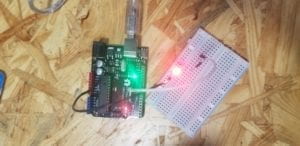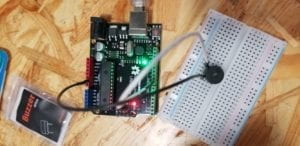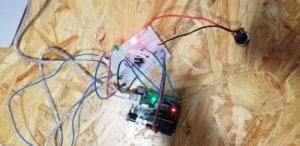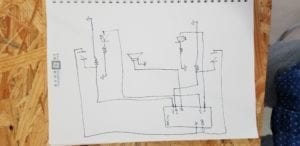QUESTION 1:
Reflect how you use technology in your daily life and on the circuits you just built. Use the text Physical Computing and your own observations to define interaction.
Looking back, I feel that I’ve often neglected or undervalued the technical process of interactive devices that allow me to achieve daily tasks. During our recitation class, we were asked to assemble a circuit that would light an LED with a fading effect and a circuit that would result in the sound of a buzzer using both the analog and digital functions of the Arduino.
 Here is the completed “fade” circuit.
Here is the completed “fade” circuit.
 Here is the completed “toneMelody” circuit.
Here is the completed “toneMelody” circuit.
Considering Chris Crawford’s definition of interaction as “an iterative process of listening, thinking, and speaking between two or more actors”, it’s apparent how these two relatively circuits operate within this definition as both the light and speaker require our own involvement in order to reciprocate with an action. However, once we essentially combined these two features to create the “speed game”, it showed how these less apparent examples of interaction can be utilized to form something we commonly identify as interactive, which in our case was a two-player computer game.

Here is an image of the completed “speed game”.

Schematic of speed game circuit.
QUESTION 2:
Why did we use the 10K resistor with the push button?
We used the 10k resistor with the push button in order to prevent shortening the circuit, which could potentially harm the push button. As mentioned in my last blog post, the resistor is able to lessen the flow of electricity throughout the circuit while not completely diminishing energy reaching the desired component.
QUESTION 3:
If you have 100,000 LEDs of any brightness and color at your disposal, what would you make and where would you put it?
With 100,000 LEDs of any brightness and color at my disposal, I would make a life-sized mirror made of lights. Similar to how we use pixels of lights on computers or phones to make images appear on our screens, I would arrange these LEDs in rows so that a full image could be displayed. Ideally, this would be displayed in a closed environment, like a museum, so that the lighting could be controlled to capture the object being displayed and the LEDs could be more apparent. I think people enjoy seeing themselves displayed in unique ways, and the LEDs would allow for people to see themselves beautifully displayed in light and color.